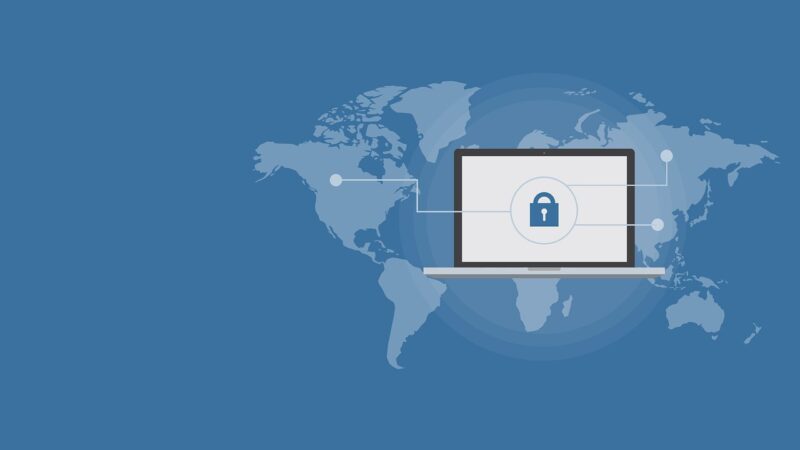Mastering the Art of Building Healthy Digital Habits

In today’s world, screens are everywhere, constantly grabbing our attention. Many people struggle with spending too much time on their devices, which can lead to feeling stressed or disconnected from the real world.
One important fact is that establishing healthy boundaries and using productivity tools can significantly manage screen time and reduce digital distractions. This blog post will guide you through mastering the art of building healthy digital habits.
You’ll learn why it’s crucial for your mental and emotional well-being, how to set limits around your tech use, foster positive online behaviors, and ensure your online safety.
Our journey together will help you find a balanced lifestyle between the virtual and physical worlds. Keep reading to transform your relation with technology!
Key Takeaways
- Using productivity tools helps manage screen time and nurtures healthy online behaviors.
- Setting a good example by balancing digital and family time encourages positive habits in others.
- Creating a family media plan with clear screen time guidelines promotes accountability and well-being.
- Temptation bundling can motivate us to pair tasks we avoid with ones we enjoy, leading to healthier habits.
- Safeguarding personal data and understanding digital citizenship are crucial for online safety.
Why Building Healthy Digital Habits is Important
Building healthy digital habits is crucial for maintaining good mental health and overall well-being in the digital age. Understanding the impact of technology on our lives is essential for fostering a balanced relationship with it.
Impact on mental health
Spending too much time on screens can hurt our mental health. Studies show that heavy use of social media and the internet can increase feelings of anxiety, depression, and loneliness.
It’s crucial for digital wellness to manage screen time effectively. This means setting limits on how often we use our devices and choosing activities that help us relax without screens.
By doing this, we support our well-being and reduce the risk of negative mental health impacts.
Social media should be a tool for connecting with others but not at the cost of our mental health. – A professor in Dubai offers ways to engage with social media positively while limiting its potential harm.
Encouraging mindful digital consumption involves being aware of how technology affects our emotions and relationships. When we monitor the impact on mood and seek a balance between online and offline activities, we cultivate healthy technology use.
This approach promotes developing good digital habits that support both physical and emotional well-being, ensuring that technology serves as an asset rather than a liability to our overall happiness.
Importance of digital well-being
Digital well-being is crucial for maintaining a healthy relationship with technology. Understanding the impact of digital habits on mental health is vital, and setting boundaries for digital usage can contribute to overall well-being.
Establishing healthy online routines and balancing screen time are essential for nurturing digital wellness. Moreover, promoting a healthy attitude towards technology through mindful digital usage can further enhance personal data security and encourage positive online behaviors.
Encouraging mindful digital usage, practicing personal data security, and managing screen time are pivotal in fostering a healthy relationship with technology. By using productivity tools for digital management and understanding the impact of digital habits on mental health, individuals can cultivate healthy technology use.
Balancing online and offline activities also plays a significant role in establishing positive online behaviors that underpin digital well-being.
Setting Boundaries and Managing Screen Time
Set boundaries and manage screen time by creating a family media plan. Balancing family time with screen time is important.
Creating a family media plan
To create a family media plan, start by setting clear guidelines for screen time and digital usage. This involves establishing specific time limits for different activities and devices, such as smartphones, tablets, and computers.
By doing this, you can encourage a healthier balance between online and offline activities while promoting positive digital habits within the family. Additionally, openly discussing the rules with all family members fosters understanding and compliance with the established boundaries.
Furthermore, implementing regular check-ins to assess how well the media plan is being followed is crucial in maintaining accountability and making necessary adjustments along the way.
By using these methods to establish a comprehensive family media plan, you can actively promote healthy technology use within your household while nurturing digital wellbeing amongst your loved ones.
Balancing family time and screen time
Creating a family media plan is crucial for establishing healthy digital habits. This involves setting boundaries and managing screen time to ensure a balance between family time and digital usage.
By setting a good example, parents can encourage positive digital behaviors among their children, reinforcing the importance of family communication in developing healthy online habits.
To enhance this focus on balancing family time and screen time, let’s explore the next step – Establishing Positive Digital Habits through using productivity tools and temptation bundling to cultivate a healthy attitude towards technology use.
Setting a good example
Showcasing positive digital behaviors is crucial for instilling healthy habits in others. By using productivity tools and managing screen time diligently, individuals can effectively demonstrate the importance of balance and self-discipline to those around them.
This sets the foundation for a family media plan that prioritizes quality time together while also encouraging responsible digital usage. Additionally, actively engaging in discussions about online safety and personal data security within the household cultivates a culture of awareness and proactive measures against potential online threats, promoting a sense of digital well-being and fostering positive online behaviors.
…
Establishing Positive Digital Habits
Develop positive digital habits by utilizing productivity tools and implementing temptation bundling strategies. Cultivate a healthy attitude towards technology to promote digital well-being.
Using productivity tools
Productivity tools are essential for managing screen time and digital distractions, aiding in the formation of healthy online behaviors. By integrating these tools into daily routines, individuals can enhance their digital wellness and establish positive habits.
These productivity tools facilitate the cultivation of healthy technology use by promoting mindful digital usage and fostering a balanced relationship with technology. Additionally, using productivity tools is crucial for strengthening personal data security online and creating positive online behaviors.
Through incorporating these tools, individuals can develop proactive strategies to manage their digital habits effectively, ultimately leading to improved well-being in the everchanging realm of technology.
Incorporating productivity tools into daily life plays a pivotal role in forming positive habits for digital wellness. The utilization of such tools not only aids in managing screen time but also encourages mindful digital usage while safeguarding personal data online.
By leveraging these essentials alongside cultivating a healthy attitude towards technology use, individuals can effectively navigate the complexities of the digital world while creating tailored boundaries for their digital engagement.
Furthermore, utilizing productivity tools enables individuals to balance their online and offline activities meticulously while promoting overall safety and well-being within the realm of technology.
Temptation bundling
Temptation bundling is a strategy that involves pairing enjoyable activities with less desirable ones to encourage habit formation. By combining something you love, like watching your favorite show or listening to music, with a task you need to accomplish but may not enjoy, such as exercising or doing household chores, you can motivate yourself to complete the less appealing activity.
This technique leverages the pleasure of one activity to make another more enticing and promote positive behavior. For instance, pairing exercise with binge-watching your favorite TV show creates an incentive for physical activity while also allowing you to enjoy your leisure time.
By utilizing temptation bundling techniques, individuals can effectively develop healthy digital habits by associating enjoyable online activities with productive or beneficial tasks.
This approach aims to enhance motivation and make the process of establishing boundaries for digital usage more engaging and rewarding.
Cultivating a healthy attitude
Transitioning from managing digital distractions to cultivating a healthy attitude, it’s important to foster a positive mindset towards technology. Utilizing productivity tools and avoiding unnecessary jargon can help in creating a balanced relationship with technology.
Furthermore, understanding the impact of healthy online behaviors on mental health and personal data security underscores the importance of building a healthy connection with digital platforms.
Encouraging mindful digital usage alongside strengthening online safety measures contributes to developing a holistic approach to digital self-care.
Cultivating a healthy attitude towards technology involves nurturing positive online behaviors while encouraging mindful digital usage as well as reinforcing personal data security.
By fostering this approach, individuals can effectively manage screen time and distractions, thus building healthier relationships with technology and promoting their overall well-being.
Promoting Online Safety
Promote online safety by safeguarding personal data and fostering an understanding of digital citizenship. For a comprehensive exploration, kindly read more.
Personal data security
Personal data security is crucial in the digital age. Strengthening the safety of personal data online is vital to protect against cyber threats and privacy breaches. Understanding digital citizenship and safeguarding personal information are essential steps in promoting online safety.
It’s important to monitor online activities and use reliable tools to ensure that personal data remains secure.
By actively managing our personal data security, we contribute to building a healthy digital environment and cultivating healthy technology use. The prevalence of cyber threats emphasizes the need for individuals to prioritize their personal data security.
Understanding digital citizenship
Promoting Online Safety
Understanding digital citizenship is crucial for promoting online safety. It involves teaching individuals to use the internet responsibly and be mindful of their digital footprint.
In this everchanging digital realm, being aware of personal data security and privacy settings is essential in establishing healthy online behaviors. Digital selfcare also hinges on recognizing the impact that one’s actions may have on others and respecting the intellectual property rights of content creators.
Raising Awareness Among Young People
Understanding digital citizenship goes beyond protecting personal information; it means equipping young people with comprehensive knowledge about their responsibilities as digital citizens.
This includes comprehending the implications of their interactions online and adhering to ethical guidelines in social media usage, ultimately contributing to a safer and more respectful online environment for all users.
By instilling these values from an early age, we can cultivate a generation that engages mindfully with technology while prioritizing online safety.
Monitoring online activities
Monitoring online activities is crucial for ensuring online safety and promoting healthy digital habits. Personal data security and understanding digital citizenship are essential aspects to consider when it comes to monitoring online activities.
Additionally, communicating early and often about the role of technology in family life can help create healthy digital habits at home. It’s important to navigate the impact of social media on children’s social cues and mental health while tailoring our approach towards mindful digital usage.
Taking breaks, monitoring mood impacts, and balancing online and offline activities also contribute to a healthier relationship with technology.
Encouraging mindful digital usage is not only beneficial for mental well-being but also promotes healthy relationships with technology.
– Encouraging Positive Communication Online
Encouraging Mindful Digital Usage
Encourage taking regular breaks from screens.
Monitor the impact of digital usage on mood.
Taking breaks
To ensure mindful digital usage, taking breaks from screen time is crucial. It helps in monitoring the impact on mood and balancing online and offline activities. For example, setting a timer for regular breaks can prevent prolonged exposure to screens and reduce eye strain.
Additionally, engaging in physical activities or social interactions during these breaks promotes overall well-being and reduces the negative effects of excessive screen time.
Establishing healthy digital habits involves incorporating regular breaks into daily routines to maintain a balanced lifestyle while using technology. By actively implementing this practice, individuals can effectively manage their digital usage for improved mental and physical health.
– Monitoring the impact on mood
Monitoring the impact on mood
After taking regular breaks from screen time, it’s crucial to monitor the impact on mood. Studies show that excessive screen time can contribute to feelings of anxiety and stress, affecting overall mental well-being.
By staying mindful of how digital usage influences our emotions, we can prioritize activities that promote a positive mindset and emotional balance.
Encouraging mindful digital usage includes tracking changes in mood after prolonged screen exposure. It’s essential to recognize any negative effects such as irritability or decreased energy levels caused by excessive digital consumption.
Observing these changes enables individuals to make conscious adjustments in their online behavior and seek healthier alternatives when needed.
Balancing online and offline activities
To ensure a healthy digital lifestyle, it’s essential to balance online and offline activities. Encouraging breaks from screens and engaging in offline hobbies fosters a well-rounded approach to technology use.
Monitoring the time spent online versus offline can help strike this balance effectively, promoting a healthy relationship with technology.
Limiting screen time and distractions plays a crucial role in managing digital habits. By creating designated times for both online and offline activities, individuals can develop healthier behaviors.
Furthermore, incorporating family activities that do not involve screens helps promote bonding and reduces excessive reliance on technology.
Conclusion
In mastering healthy digital habits, setting boundaries and using productivity tools are key. Emphasize the practicality of these methods in managing screen time and distractions. Implementing these strategies can lead to significant improvements in mental well-being and online safety.
Explore further resources for continued learning and engagement beyond this article. Let’s embrace the potential impact of applying these approaches with a motivational statement that encourages action.
FAQs
1. What are healthy digital habits?
Healthy digital habits involve managing screen time, avoiding distractions, and developing a positive relationship with technology.
2. How can I reduce my screen time?
You can reduce your screen time by setting limits on device use, taking regular breaks, and finding other activities to enjoy away from screens.
3. Why is it important to manage distractions while using technology?
Managing distractions helps you focus better, get more done, and build a healthier relationship with your devices.
4. Can developing healthy online behaviors improve my life?
Yes! By building healthy relationships with technology and controlling your screen time, you can enhance your well-being and productivity.





